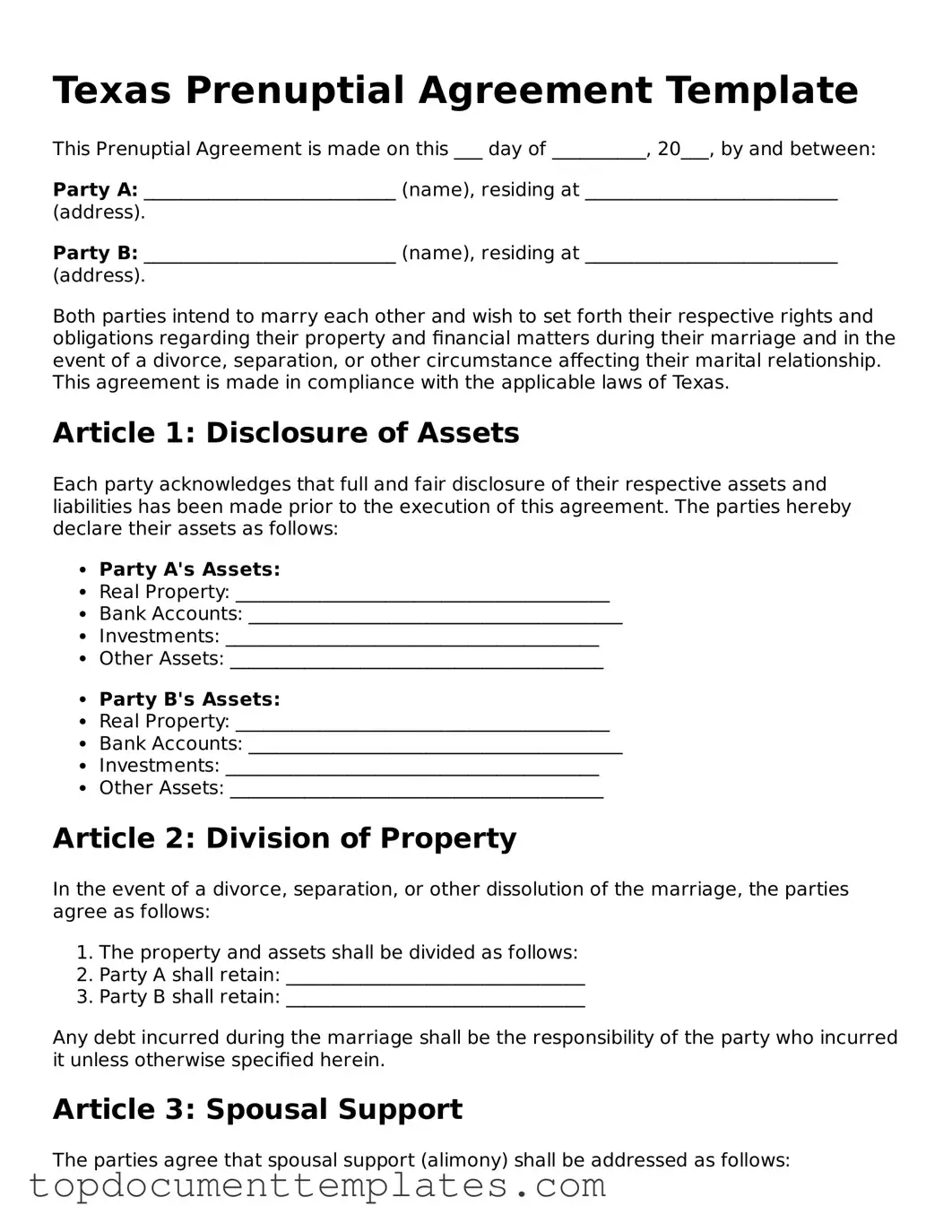When considering marriage in Texas, many couples find it beneficial to explore the option of a prenuptial agreement, commonly known as a prenup. This legal document serves as a proactive measure to outline the financial and property rights of each partner in the event of a divorce or separation. A Texas Prenuptial Agreement form typically includes essential details such as the identification of each party, a clear description of the assets and debts each partner brings into the marriage, and provisions regarding how these assets will be managed during the marriage and divided if the relationship ends. Additionally, the agreement can address issues like spousal support, ensuring that both individuals have a clear understanding of their rights and responsibilities. By thoughtfully discussing and documenting these aspects before tying the knot, couples can foster transparency and reduce potential conflicts in the future, allowing them to focus on building a strong and healthy partnership. Understanding the elements of a Texas Prenuptial Agreement form is crucial for anyone considering this important step, as it can provide peace of mind and a solid foundation for the marriage ahead.
